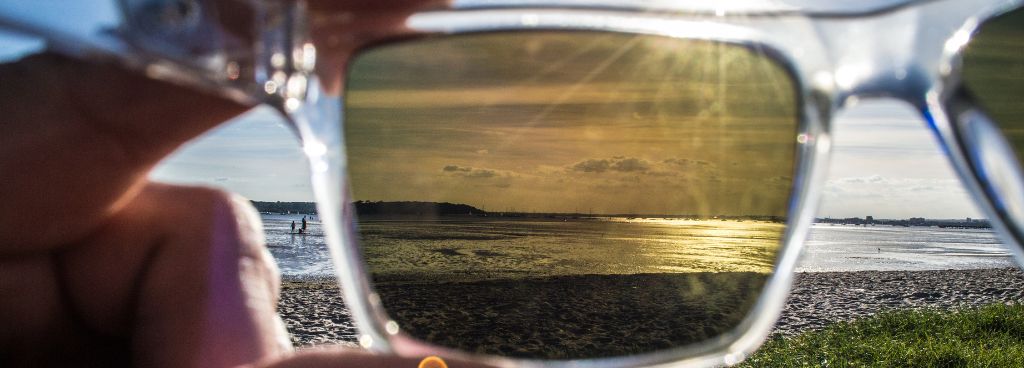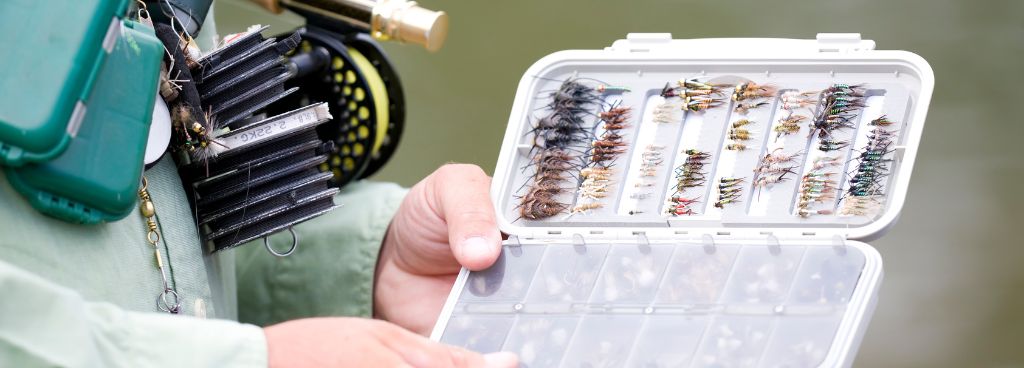Stories Worth Reeling In...
Last Updated on September 25, 2023
Picture yourself standing on the edge of a serene lake, scanning the water’s surface for subtle movements or the telltale signs of a lurking bass. The anticipation builds as you lock eyes with your target, strategizing your approach to make the perfect cast. Sight fishing is an art that allows you to witness the battle unfold in real time as you entice the bass to strike.
Throughout this guide, we’ll delve into the intricacies of sight fishing for bass. We’ll explore the techniques, gear, and environmental factors that come into play. Whether you’re a seasoned angler looking to enhance your skills or a novice eager to embark on a new fishing adventure, mastering the art of sight fishing is sure to take your bass fishing experience to extraordinary heights. Get ready to witness the beauty of bass in clear water and immerse yourself in the captivating world of sight fishing.
Table of Contents
When it comes to bass fishing, sight fishing stands out as a technique that allows anglers to directly target bass in clear water using their visual senses. This approach offers unique advantages, as it requires the angler to rely on keen observation and precise execution.
Clear water conditions present the ideal opportunity for sight fishing, as visibility plays a crucial role in detecting bass and their behavior. In such environments, you have the advantage of seeing bass as they move, feed, and interact with their surroundings. This heightened level of visibility allows you to assess their behavior and strategize accordingly.
To effectively sight fish for bass, it’s important to familiarize yourself with their behavior during critical periods, such as spawning and feeding. During the spawning season, bass are more likely to be found in shallow waters near their nests, exhibiting protective behavior.
Knowing the preferred habitat of bass, such as submerged vegetation, rocky structures, or underwater ledges, helps you narrow down the areas where you’re most likely to encounter them. By targeting these specific locations, you increase your chances of success in sight fishing.
As you engage in sight fishing, be attentive to the visual cues and signs that bass exhibit. Look for movements near the surface, such as wakes, swirls, or tailing activity, which indicate the presence of feeding or cruising bass. Pay attention to changes in water color, as darker patches may indicate the presence of bass or potential ambush points.
Keep an eye out for any conspicuous underwater structures or objects that bass may use as cover or ambush points. These areas are likely to hold bass and can be prime targets for sight fishing.
Color is presumably visible to the bass. Their vision is sharpest in the medium-red to green range. It fails quickly when it moves into the blues and purples, as well as the deep reds.
When it comes to sight fishing for bass, having the right gear and equipment is crucial to maximizing your chances of success. Let’s delve into the essentials that will enhance your sight fishing experience and improve your ability to target that elusive bass in clear water conditions.

These specialized sunglasses help reduce glare and enhance visibility, allowing you to see beneath the water’s surface with greater clarity. Polarized lenses enable you to spot bass, identify underwater structures, and read subtle movements, ultimately improving your ability to locate and target your desired catch.
A medium to medium-heavy rod with a fast or extra-fast action is recommended for accurate casting and quick hook sets. This type of rod provides the necessary sensitivity to detect subtle bites and the strength to handle larger bass. Pair your rod with a quality baitcasting or spinning reel that offers smooth operation and a high gear ratio for quick line retrieval.
When it comes to choosing the right fishing line, a fluorocarbon or monofilament line is preferred for sight fishing. The Fluorocarbon line offers low visibility and excellent sensitivity, making it an ideal choice for clear water conditions. A monofilament line, on the other hand, provides good flexibility and can be advantageous when fishing around cover or structure. Consider the specific fishing conditions and adjust your line choice accordingly.
To increase your chances of enticing bass while sight fishing, it’s also important to select the appropriate lures. Opt for lures that imitate the natural prey of bass, such as soft plastic worms, crawfish imitations, or topwater baits. These lures are known to elicit strikes from bass when presented with precision and finesse.
Lastly, don’t forget to carry a suitable landing net or lip grippers to safely handle and release the bass you catch. This ensures the well-being of the fish and allows for responsible angling practices.
When it comes to sight fishing for bass, employing the right techniques is essential for success. Effective strategies will help you approach, position, cast, and present your lures to visually targeted bass, increasing your chances of enticing strikes and landing your desired catch.
Approaching and positioning yourself correctly is crucial in sight fishing. Maintaining stealth and quiet movement is key to avoiding alarming the bass in clear water. Approach your fishing spot carefully, minimizing noise and disturbances. Position yourself for optimal visibility, taking advantage of elevated platforms or shoreline cover to conceal your presence. Be prepared to adjust your position based on the movements of the sighted bass, ensuring you maintain a strategic advantage.
Accurate casting and precise lure presentation are vital when sight fishing. Focus on making accurate casts to avoid spooking the bass. Pay attention to their behavior and movements to anticipate their location and target your casts accordingly. Present your lures in a natural and enticing manner, mimicking the movements of their prey. Take into account the speed and direction of the water flow, adjusting your casting angles and presentations to align with the bass’s feeding patterns.

Experiment with different retrieval speeds, incorporating pauses and subtle twitches to imitate the behavior of wounded or vulnerable prey. Vary your lure choices to match the specific conditions and preferences of the bass you’re targeting. Consider using realistic-looking soft plastic baits, topwater lures, or jerk baits that mimic the natural movement and appearance of the bass’s prey.
Weather conditions, water clarity, and light intensity play crucial roles in sight fishing. Different weather patterns can affect bass behavior and their willingness to strike. Pay attention to factors like cloud cover, wind direction, and temperature, as they can influence the activity levels of sighted bass. Water clarity plays a vital role in visibility, allowing you to better spot and target bass.
Underwater structure, vegetation, and cover are important considerations in sight fishing for bass. These elements provide hiding spots for bass and influence their movement and behavior. Understanding how bass relates to structures such as submerged rocks, fallen trees, or weed beds can help you position yourself and present your lures effectively. Similarly, consider how vegetation and cover affect the visibility of your lures and adjust your techniques accordingly.
Adapting your strategies based on changing environmental factors is key to successful sight fishing. Weather conditions can fluctuate, and water clarity may vary throughout the day. Be prepared to modify your approach, lure choices, and presentations to accommodate these changes. Read the bass’s response to your presentations and adjust accordingly to maximize your chances of enticing strikes.
By honing your skills in approaching, casting, and presenting lures to visually targeted bass, you can increase your chances of enticing strikes. Explore the clear waters where bass thrives, equipped with the right gear and techniques.
Remember to practice patience, observation, and adaptability as you refine your sight fishing skills. So, gather your gear, find those clear water havens, and let the sight fishing journey begin. Unleash the angler within and experience the excitement and rewards that sight fishing for bass has to offer.